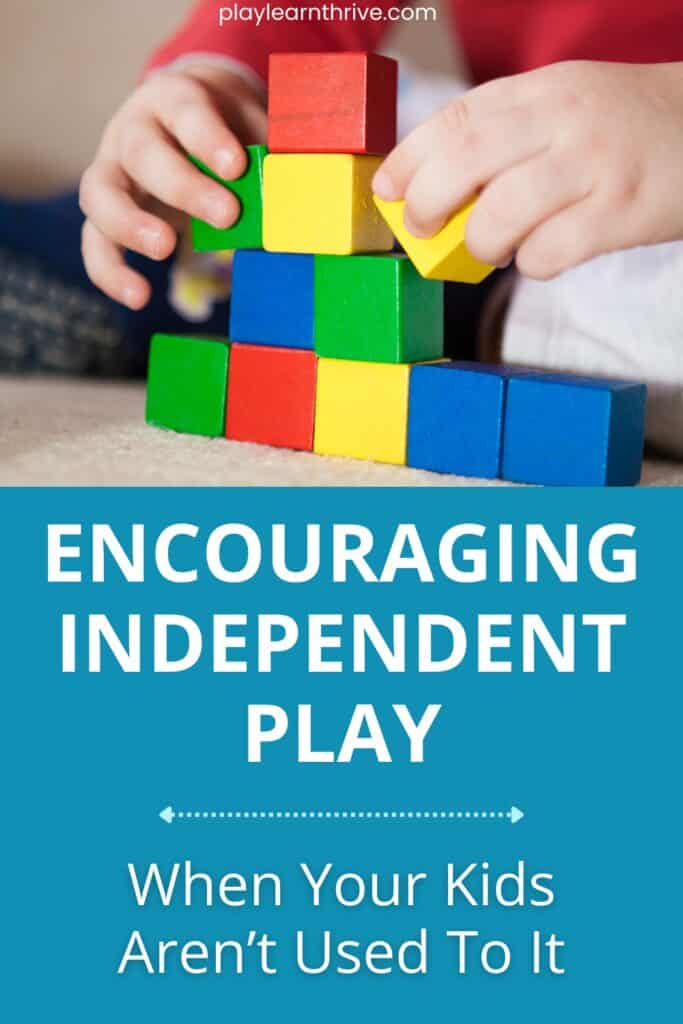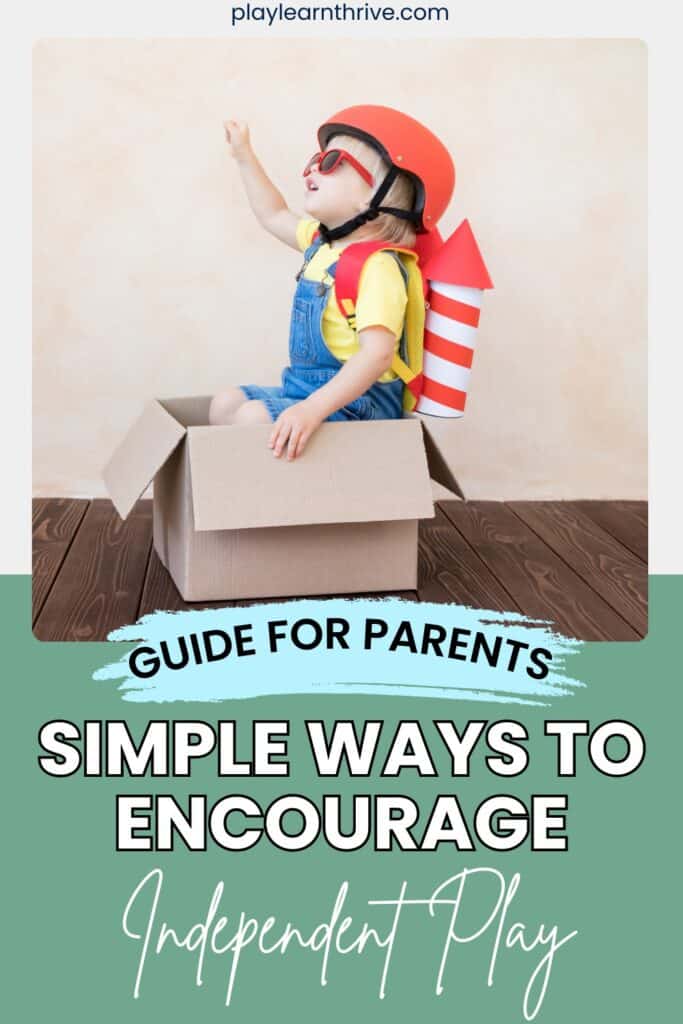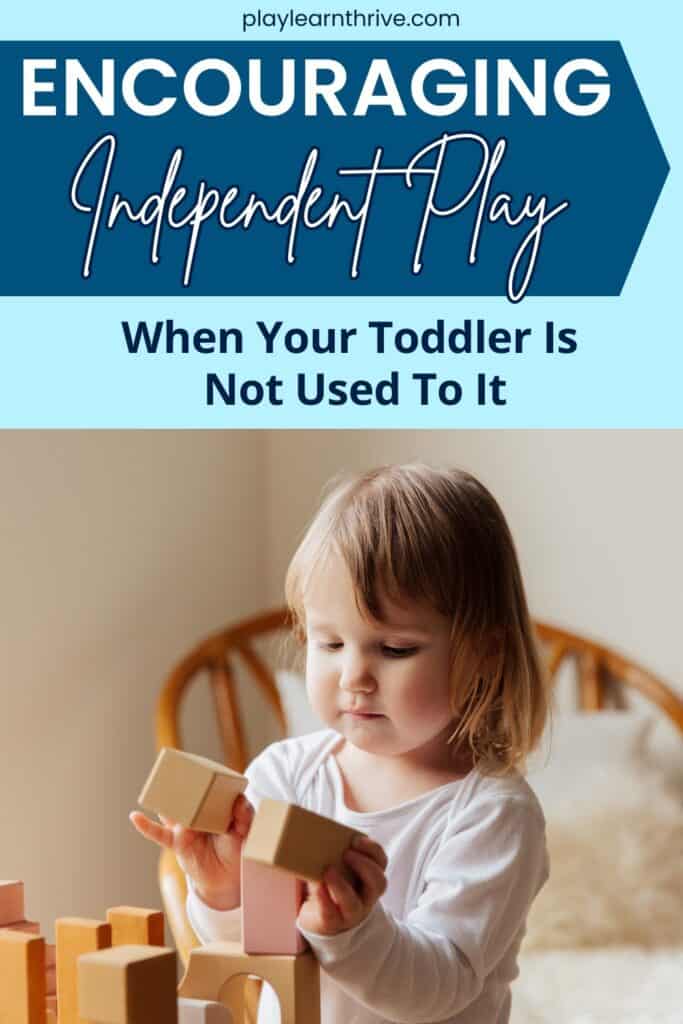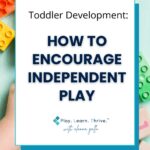How to Get a Toddler to Play Independently (Without Tears or Guilt)
Struggling with a clingy toddler? Learn how to get a toddler to play independently with simple, research-backed strategies.
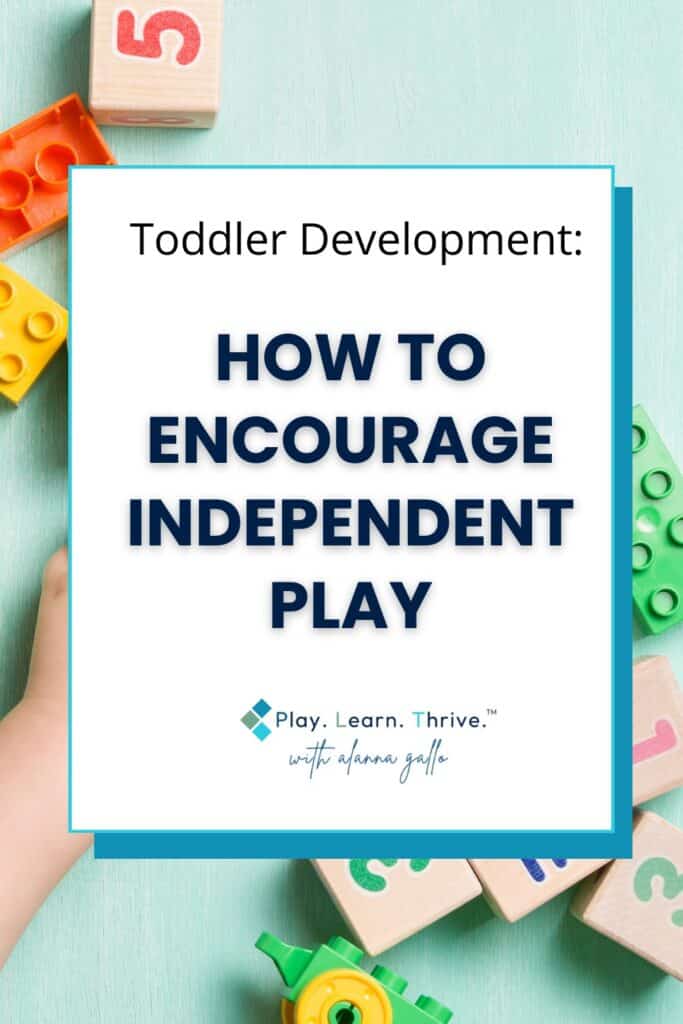
Play. Learn. Thrive.™ only endorses products we authentically love and use. Some of the product links in this post may be affiliate links. That means that if you click them and make a purchase, this site makes a commission. Play. Learn. Thrive.™ is also an Amazon Associate. As an Amazon Associate, we earn from qualifying purchases. It will have no impact on the price you pay or the experience of your purchase.
Independent play is one of the greatest gifts you can give your toddler—and yourself. When children learn how to entertain themselves, they develop creativity, problem-solving skills, and confidence. Plus, it gives parents a much-needed break from being the constant source of entertainment.
But if your toddler clings to you the moment you step away, refuses to play alone, or constantly demands your attention, you might wonder: How do I get my toddler to play independently?
The good news? Independent play is a skill that can be nurtured with patience, the right environment, and a little consistency. Here’s how to encourage solo play while keeping it fun and stress-free.
Before we dive in, here’s a little about me so you know you’re getting advice from someone who’s been in the trenches! I’m Alanna Gallo, a former teacher with a master’s in education who saw firsthand how kids were losing confidence, independence, and their natural love of learning. I left the classroom to help parents raise curious, capable, and screen-conscious kids in a world that doesn’t make it easy. My work has been featured in major media outlets, and I’m here to give you real, research-backed advice—without the guilt trips or unrealistic expectations.

Why Independent Play is Important
Before diving into the how, let’s talk about why independent play matters.
Toddlers who play independently:
- Develop focus and attention span
- Learn problem-solving and decision-making skills
- Build self-confidence by mastering tasks on their own
- Strengthen creativity and imagination without adult direction
- Gain a sense of independence and self-sufficiency
Many parents feel guilty about encouraging solo play, but it’s actually a positive step toward raising a child who is confident, engaged, and happy to explore their world without constant direction.
How to Get a Toddler to Play Independently
Encouraging solo play doesn’t mean setting your toddler in a room with toys and expecting them to figure it out on their own. It’s a gradual process that involves support, trust, and the right setup.
1. Start Small and Build Up
If your toddler is used to playing only with you, suddenly expecting them to entertain themselves for 30 minutes will likely end in frustration. Instead, start with just 5-10 minutes and build up over time.
How to do this:
- Set a timer for 5 minutes and let them play while you sit nearby.
- Gradually extend the time as they get comfortable.
- Praise their efforts: “Wow! You played all by yourself for 5 minutes! That was awesome!”
Consistency is key. Even small successes add up to long-term independent play skills.
2. Create a Play-Friendly Environment
A toddler’s play space should be safe, inviting, and clutter-free to encourage independent exploration.
Here’s what works best:
- Keep toys accessible – Open shelves with a few simple, engaging toys encourage toddlers to grab what interests them.
- Rotate toys regularly – Fewer options prevent overwhelm and increase engagement.
- Provide open-ended toys – Blocks, dolls, vehicles, and pretend play items spark creativity.
- Minimize distractions – Reduce noise and turn off background screens so they can focus.
A well-organized space naturally invites toddlers to explore and engage in independent play.
3. Play With Them First (Then Step Away)
Toddlers learn best by watching, so before expecting them to play alone, model how to engage with their toys.
Try this:
- Sit with your toddler and engage in a simple, hands-on activity like building blocks or stacking cups.
- After a few minutes, gradually step back while they continue playing.
- Let them lead, but resist the urge to direct or correct their play.
For example, if they start stacking blocks in a way you wouldn’t, let them explore! Learning through trial and error is key to independent play.
4. Use a Transitional Object
If your toddler struggles with separation, using a comfort item (like a special stuffed animal or favorite blanket) can help ease the transition.
Try saying:
“Teddy is going to sit with you while you build your tower! I’ll be right over here.”
Having a familiar, reassuring object can make playing alone feel safe and enjoyable.
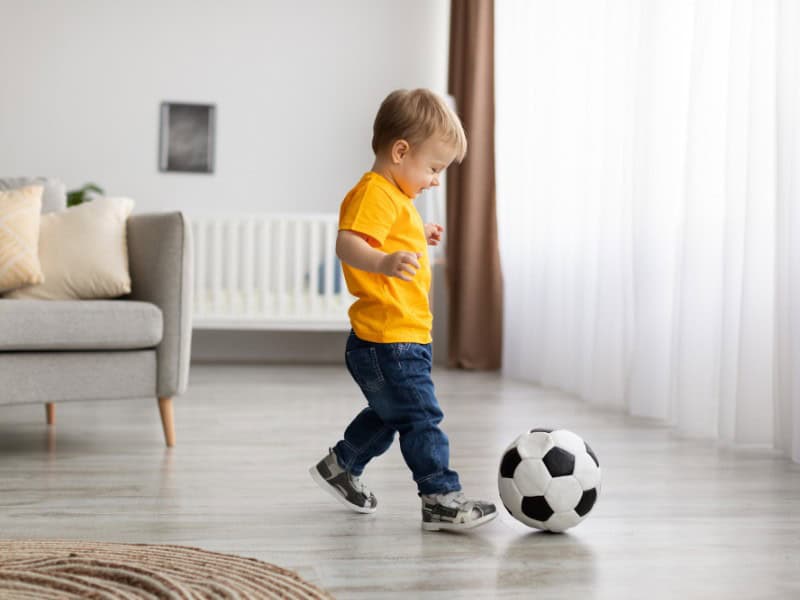
5. Set Clear Expectations (and Stick to Them)
Sometimes, toddlers resist playing alone because they’re unsure what’s expected. Create clear, simple routines around independent play.
Here’s how:
- Use a phrase like: “It’s playtime! You get to play by yourself while I finish my coffee.”
- Set a visual timer so they understand when you’ll return.
- Follow through consistently so they learn to trust the routine.
If they resist at first, that’s normal! Stay consistent, and they’ll eventually adapt.
6. Encourage Independent Problem-Solving
If your toddler immediately asks for help, resist the urge to jump in right away. Instead, ask guiding questions to help them figure things out.
For example:
- “Hmm, what do you think happens if you try turning that puzzle piece another way?”
- “I see you’re trying to open that container. What else could you try?”
Helping them problem-solve without stepping in too soon builds confidence and makes independent play more rewarding.
7. Avoid Interrupting Their Focus
Once your toddler starts playing alone, try not to disrupt their flow—even if they seem deep in concentration.
Interrupting can:
- Break their engagement
- Signal that play isn’t important
- Make them more dependent on you for validation
Instead, quietly observe and appreciate their focus. This reinforces the idea that independent play is valuable.
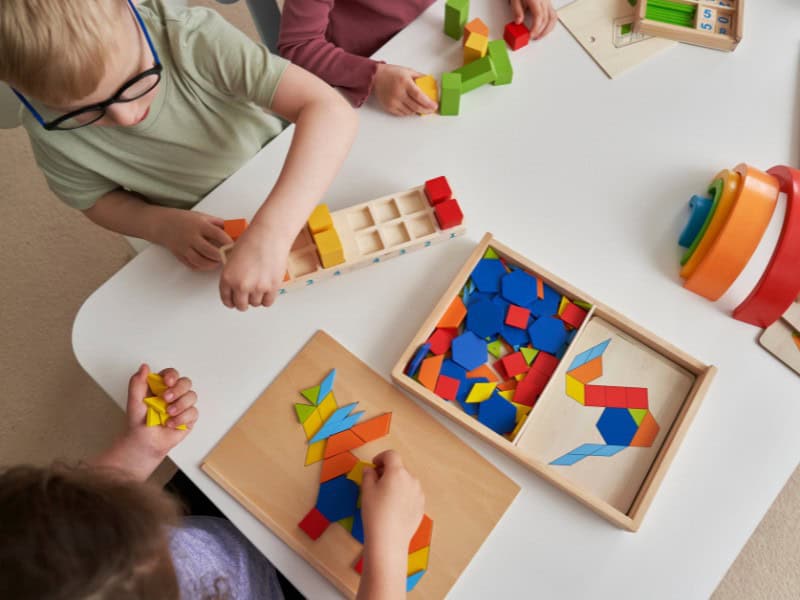
8. Praise Their Efforts (Without Overpraising)
Positive reinforcement helps toddlers feel confident about playing alone. Instead of generic praise (“Good job!”), be specific.
Try:
- “I love how you stacked those blocks so high!”
- “You played with your train set for 10 minutes! That was awesome!”
This encourages them to see independent play as something they enjoy rather than something they have to do.
What If My Toddler Refuses to Play Alone?
Some toddlers resist independent play more than others. If yours struggles, try these troubleshooting tips:
✅ Make sure they’re not overtired or hungry – Independent play works best when needs are met.
✅ Try a different time of day – Some toddlers play better alone in the morning, while others do better after outdoor play.
✅ Start with a high-interest toy – Introduce a toy they love to increase engagement.
✅ Offer a “play challenge” – Say, “Can you build a tower taller than your teddy while I put away the dishes?”
Patience is key! Keep encouraging small steps toward longer independent play sessions.
Ready to Cut Back on Screen Time?
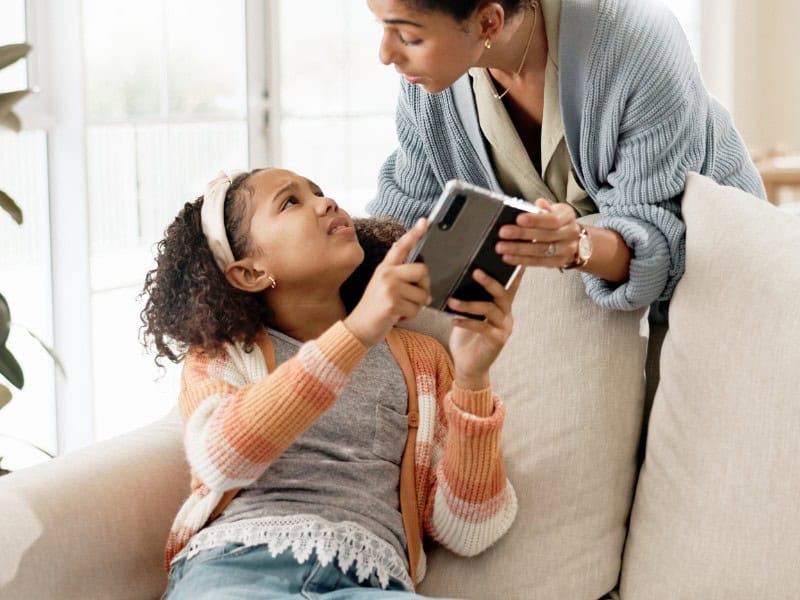
Our free Screen-Free Starter Kit gives you gentle, research-backed strategies to reduce screen time and reconnect with your child—without guilt, tears, or power struggles.
✨ Create a calmer, more connected home—starting today.
Independent Play: A Lifelong Skill
Learning how to get a toddler to play independently isn’t just about giving parents a break—it’s about equipping children with a skill that will benefit them for life.
As your toddler becomes more comfortable playing alone, they’ll develop greater confidence, problem-solving abilities, and creativity. And you’ll get those precious moments to enjoy your coffee (while it’s still hot!).
Most of all, be patient and celebrate progress. Every small step toward independent play is a win—for both you and your toddler.
Inspired by this post? Be sure to subscribe download my free Screen-Free Starter Kit! For more insights and resources on raising confident, lifelong learners, be sure to follow me on Instagram – can't wait for you to join me!

